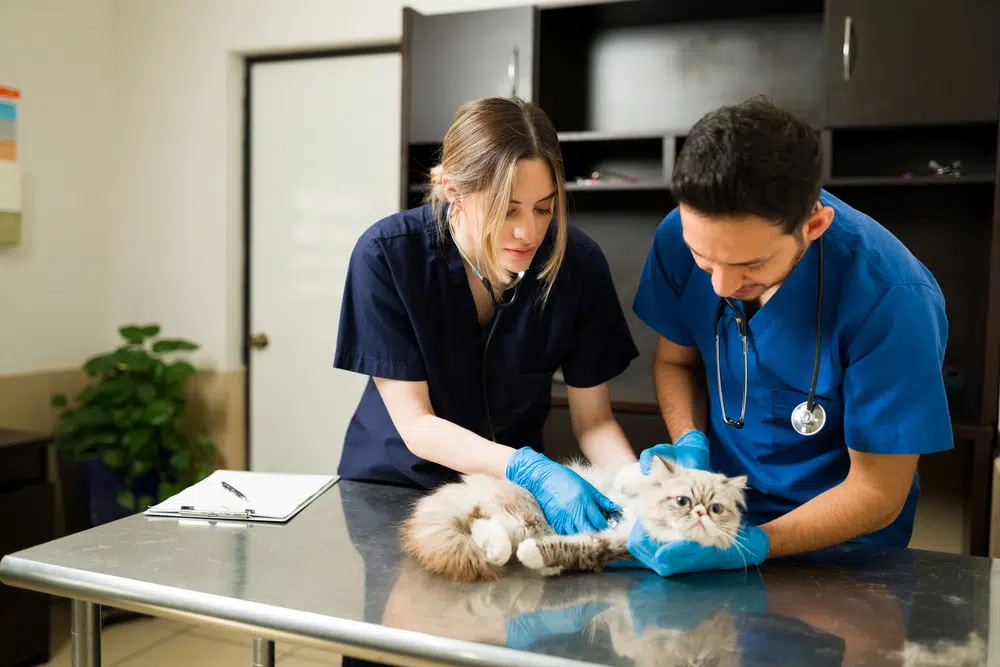How to Brush Your Dog’s or Cat’s Teeth

Dental disease is very common in our pets; it is hard to spot, and our pets do a good job of hiding their pain and discomfort caused by it. Over time, plaque and tartar build up around their teeth, bacteria will spread and multiply, and bad breath usually follows. Eventually this will lead to dental disease, with sore gums and rotting teeth.
Being able to brush your pet’s teeth will help to ensure that they maintain good dental health, keeping them happy and healthy. What’s more, you may also save on vet bills in the long term!
Getting Started
As most pets are unacquainted with toothbrushes and toothpaste, it can be tricky getting them used to having their teeth brushed. To get you off to the best start, you will need;
Cat toothpaste or dog toothpaste
A cat toothbrush, or a suitable sized toothbrush for your dog*
Cat treats or dog treats to praise your pet
Time and patience!
- Top tip: Adult toothbrushes are suitable for medium to large dogs; children’s toothbrushes are a suitable size for small dogs, and toy/miniature breeds may be best suited to a cat toothbrush!
By following these gradual steps and making the experience positive for your pet, you will have a better chance of success. Be sure not to rush through the stages, and don’t be afraid to move back a step if your pet is not quite ready!
Simple Steps
- Begin by getting your pet used to being touched around their face and mouth, ideally from a young age. This will make it easier for you and your vet to examine their teeth, and less stressful for your pet. Practice lifting the side of their lip, and praise them for letting you do so.
- Using a cat or dog toothpaste (human toothpaste can be harmful to pets!), place a small amount on your finger and allow your pet to lick it off and get used to its taste. Gently lift the side of the lip and wipe a tiny amount onto their teeth – remember to praise or give a treat for good behaviour!
- Introduce the toothbrush to your pet. Start by pressing a small amount of the pet toothpaste into the bristles of the toothbrush. Gently lift the side of your pet’s lip as before, and gently brush the teeth at the side of the mouth. Doing this for a couple of seconds is plenty to begin with.
- Gradually build up the length of time as your pet gets more used to it, and begin brushing the back and front teeth. You may find a small toothbrush easier to reach the back teeth.
Alternative to brushing
Brushing your pet’s teeth is the most effective way of maintaining good dental health. However, if you have had no success and your pet will absolutely not tolerate it, there are other alternatives to help manage their dental health.
Feeding dry food, particularly a diet formulated to help dental health, will help to scrape plaque from the tooth surface. Consult your vet before switching your pet’s diet to make sure it is suitable for them.
Chews and toys designed for dental health also act by scraping off plaque. Just be careful not to overfeed on the chews or your pet may become overweight!
Dental hygiene powders and gels can be added to your cat or dog’s food are also designed to help reduce bad breath, tartar, and plaque. Ask your local vet or vet nurse which product they would recommend.
Lastly, your vet may recommend a full scale and polish for your pet. This is carried out whilst your pet is under a general anaesthetic. This is the best way to assess your pet’s dental health and rectify any problems such as rotting or broken teeth, and can give you a fresh start to maintain their polished teeth.
Happy brushing!


